#Neovenator
Text
neovenator, my most fleshed out figura avatar yet, with 60+ animations for just about every state a player can be in. 6 action wheel animations as well, not shown in the video, three of which play randomly while idle. though its supposed to be a neovenator it can most certainly be retextured and modeled to fit any medium-sized theropod :)
utilizes gsanimblend, jimmyanims, squishyapi, runlater, and soggyscript
download coming after some polishing!
#figura#custom player model#minecraft#modded minecraft#blockbench#paleo#paleoart#neovenator#theropod#rorys art#with fire it writes
433 notes
·
View notes
Text


56 notes
·
View notes
Text

A very worn dinosaur tooth of an indeterminate theropod, possibly Neovenator salerii from the Wessex Formation in the Isle of Wight, England. The tooth is worn beyond identification past Theropoda indet., but the CHR and CBR suggest it could be the basal carcharodontosaurian Neovenator. The basal tyrannosauroid Eotyrannus lengi is also another theropod found in this deposit, but is considered extremely rare. The majority of non-spinosaurid medium-sized theropod teeth from the Wessex Formation are assumed to be Neovenator.
#dinosaur#fossils#paleontology#palaeontology#paleo#palaeo#neovenator#carcharodontosauridae#theropod#cretaceous#mesozoic#prehistoric#science#paleoblr#ネオヴェナトル#カルカロドントサウルス科#恐竜#化石#古生物学
52 notes
·
View notes
Text

Nemesis Neovenators- By ya boi on Clip Studio Paint!
#cretaceous#paleo art#prehistoric#theropod#jurassic series#drawing#digital illustration#digital painting#dinosaurs#neovenator#paleoblr#paleoillustration#paleoart#paleontology#jurassic park
52 notes
·
View notes
Text

Neovenator salerii
29 notes
·
View notes
Text
The dinosaur tracks (Diplodocus, Iguanodon, Neovenator) of Münchehagen, Germany (Bückeberg Formation).









#paleontology#paleoblr#dinosaur#dinosaur tracks#diplodocus#neovenator#iguanodon#theropod#sauropod#ornithopod#münchehagen#palaeoblr
73 notes
·
View notes
Note
IT WONT LET ME HIT THE ASK BOX anyways hrmmm hrm Neovenator ?
Hehehehehe

3 notes
·
View notes
Text


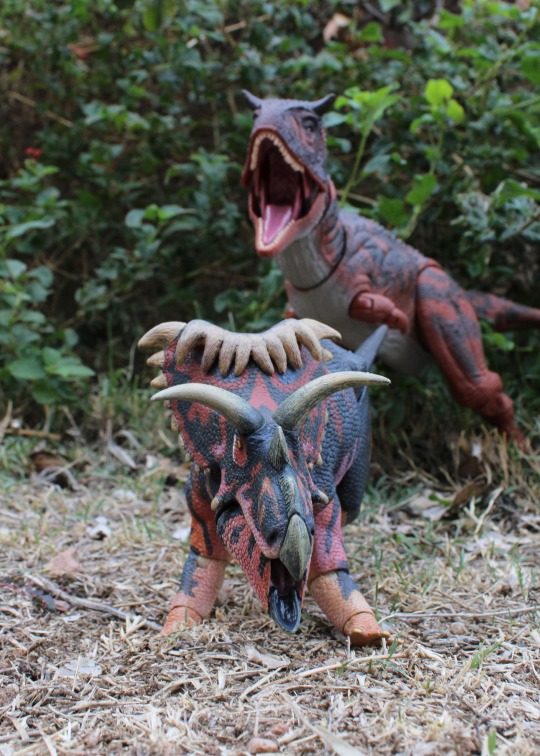
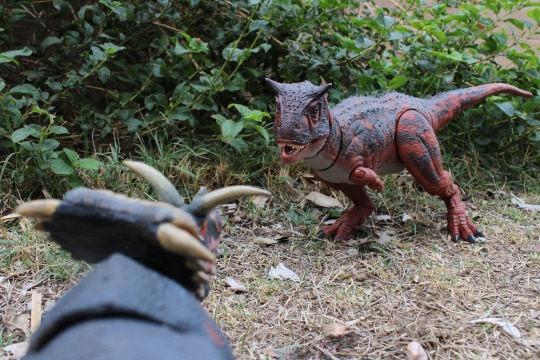
ambush!
#dinosaur toy photography#dinosaur photography#dinosaur toy#dinosaur#dinosaur toys#jurassic world toy#jurassic park toy#jurassic world#jurassic park#carnotaurus#hammond collection#beasts of the mesozoic#kosmoceratops#neovenator#of fiction#action figure photography#toy photography
3 notes
·
View notes
Text





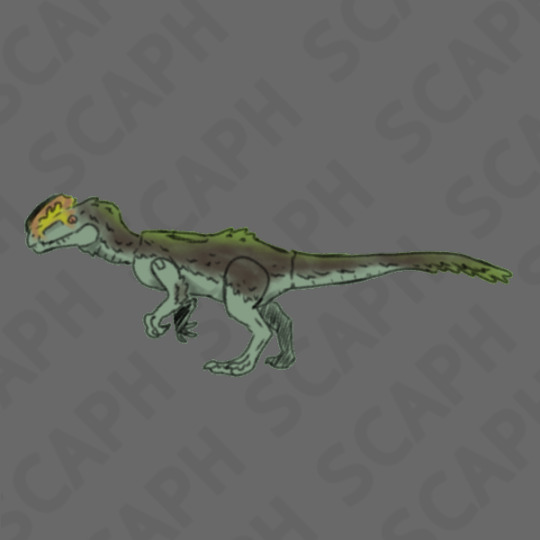
Some goofy jw mattel doodles
#jurassic world#mattel#struthiomimus#Dracovenator#Polacanthus#inostrancevia#Neovenator#dinosaur#art#artwork#dinosaurs#prehistoric#prehistory
3 notes
·
View notes
Text
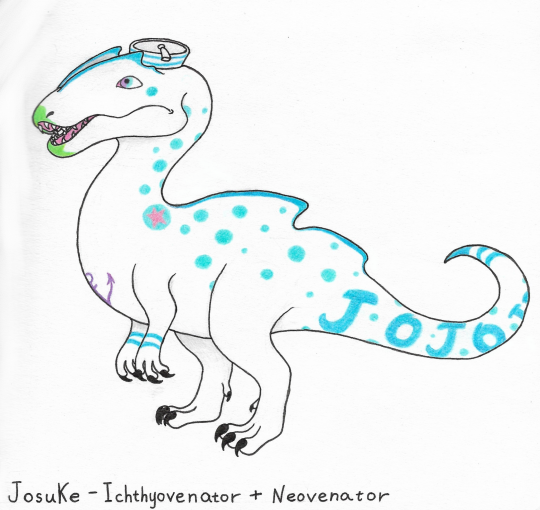
Who..?
#jojo#jjba#jojo bizarre adventure#dinosaur#jojolion#josuke 8#jojorassic world#ichthyovenator#neovenator
6 notes
·
View notes
Text



Some requests I did for a couple friends because I felt like doing headshots and designing patterns. They gave me a species and a pallet and I went from there.
The hesperornis has a “monster” version because that friends characters all have “Kaiju” characteristics
It was nice doing simple stuff, but next thing I’m gonna be doing is something big. Something going back to my first post :)
#dinosaurs#art#digital art#oc#oc art#dinosaur#bird#dinosaur oc#ibispaint art#ibispaintx#neovenator#hesperornis#kaiju#I guess
2 notes
·
View notes
Text
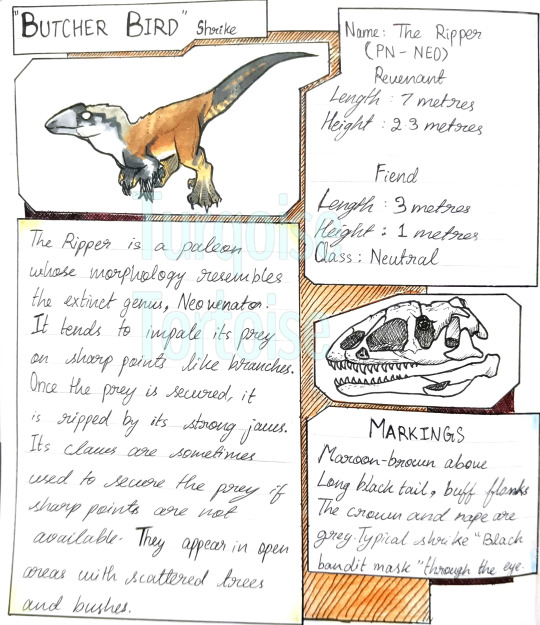
Made a dossier for a project I'm working on
#it's about birds that turn into dinosaurs#art#my art#artists on tumblr#traditional sketch#dinosaur#dinosaur art#neovenator#oc artwork#oc art#my oc art
1 note
·
View note
Text

A dinosaur tooth of an indeterminate theropod from the Cherves-Richemont Quarry in Cherves-de-Cognac, Charente, France. This particular morphology is often sold and erroneously lumped into cf. Nuthetes or "raptor" despite lacking dromaeosaurid affinities. These Lower Cretaceous aged French theropod teeth are also sometimes compared to another English species, the basal carcharodontosaurian, Neovenator salerii. Other possibilities are early tyrannosauroids such as proceratosaurids and basal pantyrannosaurs.
#dinosaur#fossils#paleontology#palaeontology#paleo#palaeo#nuthetes#neovenator#dromaeosauridae#carcharodontosauridae#tyrannosauridae#proceratosauridae#theropod#cretaceous#mesozoic#prehistoric#science#paleoblr#ヌテテス#ネオヴェナトル#ドロマエオサウルス科#カルカロドントサウルス科#プロケラトサウルス科#ティラノサウルス科#恐竜#化石#古生物学
20 notes
·
View notes
Text

YEEEEEEOUCH says this Neovenator. Stepped on something sharp or smth idk
268 notes
·
View notes
Text
Round Two: Berthasaura vs Ceratosuchops
Berthasaura leopoldinae

Artwork by @i-draws-dinosaurs, written by @i-draws-dinosaurs
Name meaning: Bertha and Leopoldina’s reptile (in honour of naturalist and women’s rights activist Bertha Maria Júlia Lutz, and first Empress of Brazil and advocate for Brazilian independence Maria Leopoldina)
Time: Uncertain, likely ~121 to 75 million years ago (Aptian to Albian stages of the Early Creataceous) but may be younger
Location: Goio-Erê Formation, Brazil
Theropods are famously carnivorous dinosaurs, but many, many groups of theropods have decided “actually but what if I didn’t” and gone vegetarian, and yet it’s still wild when another one of those pops up every now and then. Even among them though, Berthasaura is special for being the only theropod that seems to have tried to just straight up turn itself into an ornithopod. The long spindly legs, the teeny little arms, and a big head with a toothless beak all come together to create an utterly bizarre little theropod that honestly nobody could have predicted.
Berthasaura is a noasaur, and those of you familiar will at this moment be saying “oh of course it’s a noasaur” because those guys were small ceratosaurs that were basically Theropod Wacky Experimental Phase 1.0. Within this group you’ve got wild sticky-outy teeth, a single weight-bearing toe on each foot in our fellow competitor Vespersaurus, and now multiple instances of beaks evolving independently. Theropods just love to evolve a beak, what can I say? Whatever the hell Berthasaura had going on, it must have been successful because as the basalmost noasaurid currently known its direct lineage has been surviving since at least the Late Jurassic!
Ceratosuchops inferodios
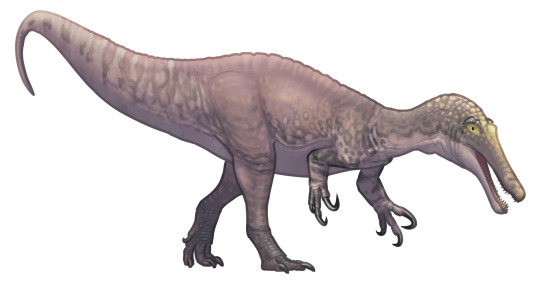
Artwork by @i-draws-dinosaurs, written by @zygodactylus
Name Meaning: Horned Crocodile Faced Hell Heron
Time: ~128 million years ago (Barremian stage of the Early Cretaceous)
Location: Wessex Formation, Isle of Wight, England
Say hello to the Hell Heron! Ceratosuchops is one of many new Spinosaurs described recently, showcasing the sheer diversity of this group as well as their much larger spread than previously believed. Ceratosuchops, previously thought to be just Baryonyx, is one of such new taxa that point to the entire group originating in Europe, a piece of their evolutionary puzzle not previously well known. Ceratosuchops was about 8.5 meters long, and had a long crocodile-like skull, with a horn on the top of it (hence its name). As a spinosaur, it would have probably been an aquatic stalker (you know, like a heron) - waiting near bodies of water for food, and snatching it up before it could swim away. Just, the difference between Ceratosuchops and actual herons, well, this was a big heron. It probably wouldn’t have had a sail, though it is possible it may have had a ridge like its close relative Suchomimus. It lived in a heavily river-filled environment, giving it a wide variety of locations to choose from for hunting. Besides a vast diversity of invertebrates, sharks, ray-finned fish, salamanders, lizards, turtles, many kinds of Neosuchians, Plesiosaurs, mammals, and pterosaurs, Ceratosuchops lived alongside other dinosaurs such as Hypsilophodon, Brighstoneus, Iguanodon, Mantellisaurus, Valdosaurus, Polacanthus, Eucamerotus, Oplosaurus, Ornithopsis, Aristosuchus, Calamosaurus, Calamospondylus, Eotyrannus, Neovenator, Ornithodesmus, Yaverlandia, Vectiraptor, Thecocoelurus, and even another spinosaur, Riparovenator!
#dmm#dinosaur march madness#dinosaurs#birds#dmm rising stars#dmm round two#palaeoblr#birblr#paleontology#bracket#march madness#polls#berthasaura#ceratosuchops
177 notes
·
View notes
Text
Siamraptor

Siamraptor was a genus of carcharodontosaurian dinosaur from the Early Cretaceous period. Its type species is S. suwati. The holotype was found in the Khok Kruat Formation in northeastern Thailand. Siamraptor is the first and currently only definite carcharodontosaurian known from Southeast Asia.
"Siam" is derived from the original name of Thailand, "raptor" is Latin for robber, and the specific name suwati refers to Suwat Liptapanlop, a supporter of the Northeastern Research Institute of Petrified Wood and Mineral Resources.
Its autapomorphies include a jugal with a straight ventral margin and a deep anterior process below the orbit, a surangular with a concavity and four posterior foramina, a groove along the suture between the surangular and prearticular, an articular with a formen at the suture with the prearticular, a cervical vertebra with an additional foramen that is excavating the parapophysis, and the presence of a pair of foramina at the base of the neural spine on the cervical and posterior dorsal vertebrae. Another possible autapomorphy specific to the genus may be a deep concavity excavating the posterior end of the lateral shelf.
Siamraptor is known from its holotype, consisting of a posterior right mandible including the surangular, prearticular, and articular; as well as referred material from three other individuals including three right premaxillae, a right and left maxillae, a left jugal, two posterior parts of the left mandible, three cervical vertebrae, a caudal vertebra, a manual ungual, a right ischium, a section of the left tibia, and a left pedal phalanx. Siamraptor was recovered as a definite carcharodontosaurian, though its relationships within the clade are uncertain. It may have been a derived member of Allosauria outside of Allosauridae or a basal member of Carcharosauria in a polytomy with Eocarcharia, Concavenator, and Neovenator.
Original paper: Original description paper
Wikipedia article: here
#dinosaur#dinosauria#paleoart#paleontology#artowkr#original art#human artist#siamraptor#carcharodontosauria#allosauria#carnosauria#tetanurae#theropoda#saurischia#obscure fossil animals#obscure fossil dinosaurs#obscure fossil tetrapods
12 notes
·
View notes